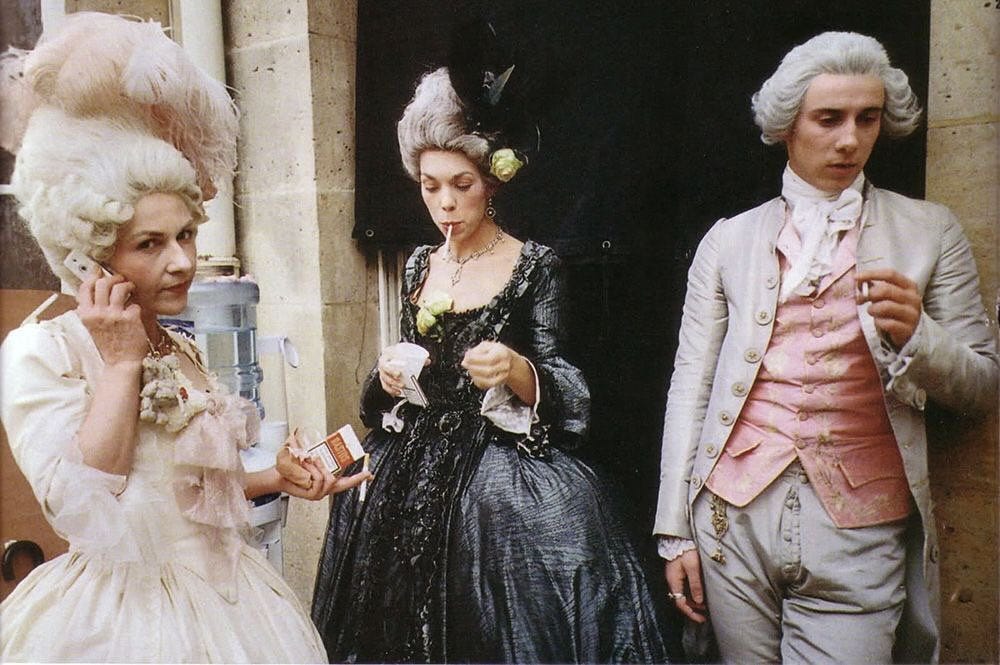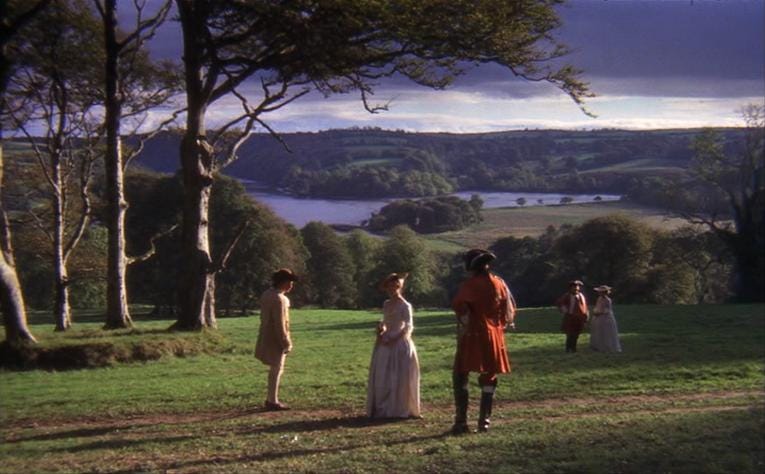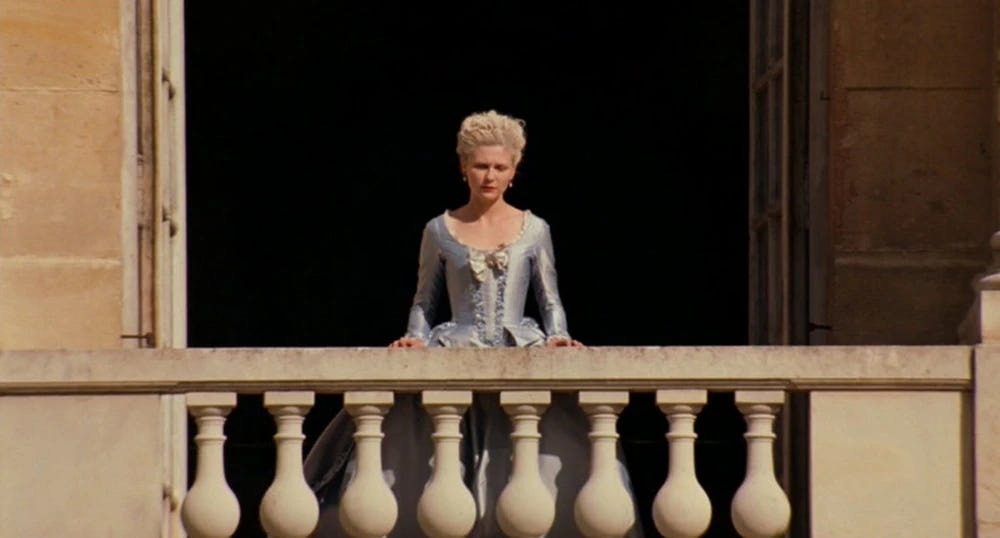Newsletter #5: Putains des Palaces
A busy week and some Enlightenment perfume
It’s been one of those frenetically busy weeks when life makes itself unavoidably known and perfume shifts to the edges of my world.
It’s bound to happen sometimes - decision fatigue sets in and one day bleeds into another as the to-do list gets longer and it feels like you haven’t even slept. In these weeks you don’t have time to stand over the sample drawer and ponder what you feel like trying today - you reach for the bottle whose scent you know like the back of your own hand, the one that will bolster and reassure you without making too much of a fuss.
An easy reach doesn’t mean I don’t vary the palette: looking back on my spreadsheet for this week I wore the warm and growling Mxxx. (Eris Parfums, 2019), the sharp and loamy Encre Noire (Lalique, 2006), the rough and powdery labdanum of Ambre (L’Occitane, 2016) and everyone in the office’s favourite layered combination of Ambre Loup (Rania J, 2012) and Hypnotic Poison (Dior, 1998) which always makes at least one person ask, ‘What is that amazing smell?’
I like to think of buying perfumes as investing in the future you who has no time to choose: put the good stuff at easy reach and even when you’re under the pump your day will become immeasurably better.
The year of tuberoses also continues as I’m delving into a sample of Compliment (Maison Violet, 2021). The house is a very old one that went extinct and was revived a few years ago, and on the whole the scents are pretty good - it helps that they’ve mostly been created by Nathalie Lorson, one of the best noses that the big fragrance houses have to offer. Compliment is competent, pretty, and obviously made using high quality materials - but it’s veering maybe a little close to shampoo for my tastes. Watch this space: more wear testing needed.
The perfume world is gearing up for Esxence 2025, coverage of which I am eagerly anticipating. The brand list of houses who will pitch up stalls is overwhelming but interesting: it’s nice to see 100Bon back in the fray as it was looking a little bit dicey for the all natural house for minute there, and it’s good to see representation of smaller houses on the cusp of fame like d’Annam, Maya Njie, and Francesca Bianchi.
Esxense and the Art and Olfaction award nominee lists are two events to keep an eye on if you’re looking to add to your must-sniff list: if, like me, your list is so long you’ll probably never get to the end, perhaps keep your nose out of the fray.
M
Powder and Palaces
Rice is a note having a renaissance in perfumery, riding in on the wave of gourmand lovers looking to explore notes that venture further afield than the typical fruity or vanillic sweet scents of the mainstream. Today I want to talk about a note often used in rice perfumes that has a long history in fragrance and cosmetics, and that is rice powder.
As a material, rice powder has been used for centuries in cosmetics in both the East and the West. It’s still used today, mainly for its oil absorbing properties and as a non-toxic alternative to talc.
Although the products themselves have changed and the people who used them are slowly beginning to leave us the smell of vintage makeup is still synonymous with rice powder, and it’s a scent that lingers in the cultural consciousness. As soon as you smell it you will recognise it: the powdery, slightly sweet smell of violets and roses and iris that smells somehow faded and distant, like a spirit of a flower that has continued to linger in a compact and powder puff.
It’s the smell of the bottom of your grandmother’s handbag, of the old fashioned pharmacy in the good part of town, of a Mason-Pearson hairbrush - the smell of the world before neoliberalism and microplastics came to rule all.
Rice powder is firmly in the category of fragrance notes that transports the sniffer straight to the cosmetics counter. Because it’s so evocative and so out of fashion it’s rarer than it should be in modern perfume, but always wonderful when you come across it. The reference perfume in this category for me has always been Putain des Palaces (Etat Libre d’Orange, 2006).1
Google auto translate, in attempt to be helpful, always changes Putain des Palaces to ‘Fucking Palaces Free State of Orange’ before I quickly switch the site back to French. A more accurate translation would be something like Palace Whore, proving once again that the early ELDO years have a lot to answer for when it comes to provocative names in perfumery.
Putain des Palaces was made by Nathalie Feisthauer working for Givaudan at the time. She’s made a lot of other great perfumes that also sit, deliciously, right on the seam between being beautiful and really disturbing, like Cow (Zoologist, 2022) and Synthetic: Tar (Comme des Garcons, 2004). Putain des Palaces is one of ELDO’s great scents, a pillar from the time when the brand was still at the cutting edge of perfumery and not coasting along in the sad middle tide of niche as it is now.
Putain des Palaces’ note list includes mandarine, ginger Orpur®, raspberry, iris, rose absolute, rice powder, tonka beans Orpur®, sandalwood, and musk.2
On paper Putain des Palaces is an amber, but that’s an olfactory frame of reference that becomes useless on first spray - the signature warm, resinous base of an amber is missing entirely here. Instead the perfume is an immediately dense faceful of powder, like you’ve taken one of those huge old school powder puffs and smacked yourself with it.
When you use loose powder, tiny particles of makeup fill the air like dust and give the illusion of suffocating on cosmetics for a moment of two. A good powdery perfume will evoke this feeling and make the air around you feel dense and thick. Putain des Palaces is a masterclass in recreating that vintage makeup feeling through smell, making it a perfume that has a texture as well as a scent: you can feel the soft, finely milled baby powder on your fingers when you spray this perfume; you can feel it tickling the insides of your nose.
Though this is very much a powder perfume in texture, the powder itself is hued in the pastel pinks and purples of the scent’s floral notes. Putain des Palaces notably does not use violet, which is usually the frequent flier in a makeup scent, and this is to the perfume’s credit - there is a sweetness to violet that would make this perfume too saccharine.
Instead the scent uses a hefty dose of rose and a smaller, though clearly legible, iris. These two floral notes can be quite dominant if left unsupervised, but are rendered dainty and restrained here. The powdery, chalky facets of iris are on full display, and there’s a dusty, pot pourri feeling to the rose. Everything in this perfume is working to enhance the rice powder, as if Putain des Palaces was once a scented powder that has somehow been transubstantiated into perfume through beauty product alchemy.
This three dimensional powder feeling is brilliantly rounded out by the demimonde of the perfume, which smells like unwashed skin. This is achieved through a musk accord that is living in the same world as Original Musk (Kiehl’s, 2004) and indeed even Muscs Koublai Khan (Serge Lutens, 1998), though at the very very edge of that deep animalic funk. It’s fleshy, this smell, sweaty and heated, perhaps even playing on that specific note in cumin that smells of body odour and ruins tagines for a small subset of the population.
It’s rare to find a perfume that meets its brief so competently - Putain des Palaces smells like powder and also the person wearing the powder to cover up the scent of their body.
Usually a powdery perfume will evoke the early 20th century for me, the era of powder boxes and vanities when Coty’s Airspun Powder first debuted, but Putain des Palaces’ name and its suffocatingly fleshy powder throws me immediately and viscerally to the ancien régime in 18th century Versailles.
Rococo is an era that lives prominently in the culture of perfume: there are many famous scents and books evoking the aesthetics of the time period. The 18th century was a time that contained great beauty but also great suffering: the era of Mozart but also the Marquis de Sade. The classic perfumery motif of the Enlightenment is exactly this, one of deep contrasts: the fair and the foul entwined together, the scent of roses trying to cover the funk of unwashed skin.
This contrast is the heart of Putain des Palaces, and it is compelling. The delicacy of the roses makes the musk seem more obscene; the skankiness of the musk makes the powder feel deeply intimate and skin-like; the warm coumarin in the drydown makes it all feel well rounded and full.
The most technically impressive thing about Putain des Palaces is that it does not smell modern whatsoever. Perfumes can sometimes have the equivalent of iPhone face, where you smell them and could never imagine them in the mis-en-scene of a Keira Knightley period drama - formulas that are too simple, too clean, or too boldly synthetic all fall into this trap. Putain des Palaces is the exact opposite, a modern perfume that feels like it has time travelled from Versailles before the Bastille, a carnal, sweaty, desperate creature covered in rice powder and roses.
As a child who loved goth music, historical drama, and melancholy, it was probably inevitable that I would become obsessed with Sofia Coppola’s Marie Antionette (2005). This is one of those movies that I saw at time when my brain was still dragging itself through the ooze of adolescence and so it got stuck in there, forever a part of the wallpaper of my mind.
I own a 30ml bottle of Putain des Palaces and whenever I spray it my mind wanders towards Marie Antionette - the film feels like an appropriate visual language for this perfume.
Marie Antionette, like all of Coppola’s films, is about the acute agony of being a teenage girl, particularly one exposed to and trapped by privilege. The film is deeply stylish, hewn in pastels and confined to the prison-palace of Versailles, and it is almost as bucolic and dreamy as a fairy tale.
The catch, of course, is that you know in every frame how it’s going to end; for Marie Antionette; for France; it is a film haunted by the oncoming shadow of the guillotine. It’s this dread simmering in the bottom of the film that gives the grand balls and lavish parties a queasiness that is difficult to shake: all that luxury has a cost and it is about to come violently due.
There’s a similar feeling of creeping dread in Stanley Kubrick’s Barry Lyndon, a painting-come-to-life film that ends just as the French Revolution is beginning. Both films are immaculately beautiful in such a precise and considered and constructed way because the world they depict is beautiful only at the deep cost and suffering of others living very unbeautiful lives.
I find perfumes that are willing to confront the politics of scent and the human body to be some of the most compelling and fascinating on the market. Though I don’t think this was Etat Libre d’Orange’s intent - the description for this perfume practically has a jazz-muzak background and is all about silk stockings and red lipstick and boudoirs - in Putain des Palaces they have given us a scent that shows us there is something poignant in the very human impulse to turn our faces towards the beautiful even when the baser truths of having to live in a body, in a society, refuse to go away.
Ghostly-white powdered faces and beauty marks to cover the scars of childhood smallpox; a garden behind a chateau filled with flowers shipped in from colonies under the boot of occupation; the smell of iris and roses trying to cover the gnawing bite of decay - that’s Marie Antionette, and Barry Lyndon, and Putain des Palaces. It’s the smell of an artificial world turned sharp and poignant because it’s right on the edge of getting burned to ashes.
Fucking Palaces, indeed. ■
Other rice powder perfumes I love include Blanc Poudre (Heeley, 2018), La Peau Nue (Celine, 2019), and Poudrextase (Marlou, 2019) which i have spoken of here; a rice powder perfume I loathe is Dirty Rice (BORNTOSTANDOUT, 2022), which smells as if someone took a wilting rice pudding and decided that what it needed was to be mixed, vigorously, with industrial strength glue.)
Orpur, for those interested, is a Givaudan own-brand line of naturals.






I loved reading this -- your prose is stunning!
And further, I love Putains des Palaces. I'm very impressed whenever I encounter a fragrance that somehow captures the warmth of flesh with perfume on top of it...and all of that on top of one's own skin. I very much liked how you articulated that. Perfumers must always be thinking in layers, so to speak, but to capture the accord flesh/sweat with the unknown factor of the wearer's skin is an amazing feat. The raspberry and rose effects of PdP came across to me as Haribo gummies soaked in rosewater, which sounded funnily luxurious to me. Please keep up the good work! I look forward to your pieces.
Replica made a perfume called Lipstick On that had the powdery iris lipstick thing. I deeply regret not buying it as it’s discontinued and I fell in love with how it dried down on my skin. I’ll have to seek out Putain des Palaces.